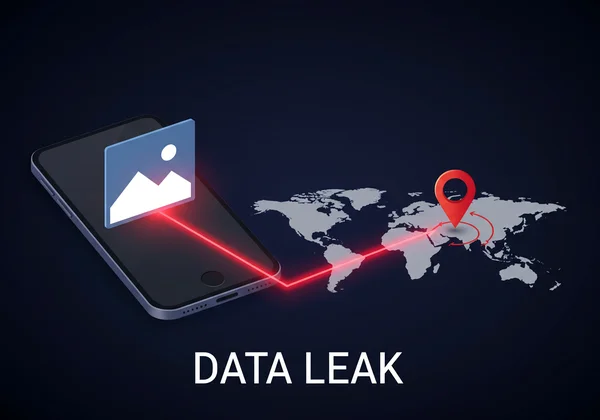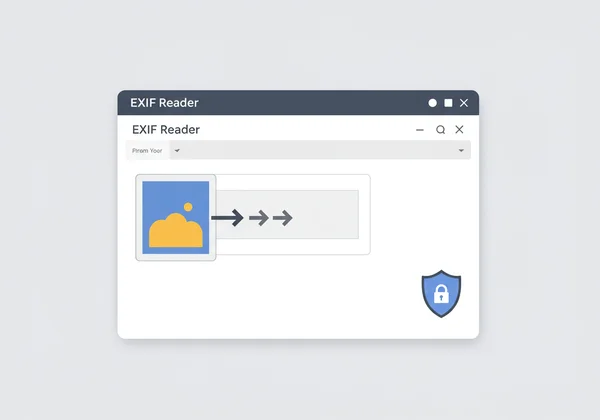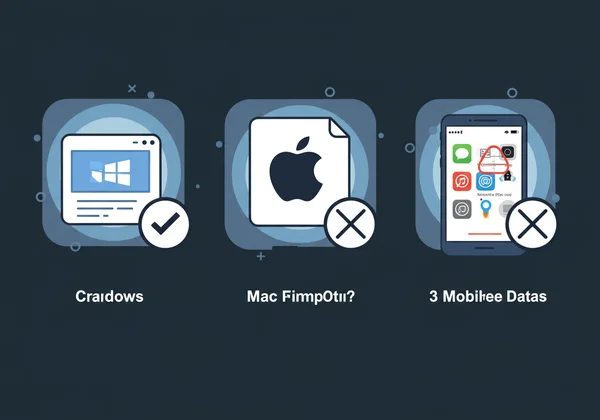EXIF Data Privacy Risks: Protect Your Photos & Metadata with an EXIF Reader
Every photo you take tells a story, but it’s not just about the image itself. Hidden within the digital file is a treasure trove of information known as EXIF data. While incredibly useful for photographers, this data also creates significant EXIF data privacy risks if left unchecked. What is EXIF data and how can you protect yourself from its hidden dangers? This guide will unveil the secrets your photos hold and show you how to manage them securely.
The first step to protecting your privacy is understanding what information you're sharing. You can use a secure image metadata viewer to see exactly what your photos are revealing to the world.
Understanding Photo Security Risks from EXIF Data
Many users are unaware of the photo security risks embedded in their images. This invisible data is automatically generated by your camera or smartphone every time you press the shutter. It includes technical details about the shot but can also contain sensitive personal information, creating a digital footprint you may not want to leave behind. Awareness is the first line of defense in managing your digital privacy.
What Hidden Information Does Your Photo Carry?
Think of EXIF data as your photo's digital birth certificate. It contains far more than just the picture. This hidden information typically includes:
- Camera Details: The specific make and model of the camera or smartphone used.
- Camera Settings: Technical data like aperture, shutter speed, ISO, focal length, and whether the flash was used. Photographers use this to improve their craft.
- Date and Time: The exact date and time the photograph was taken, down to the second.
- Software Information: The software used to view or edit the image.
- GPS Coordinates: Perhaps the most sensitive detail, the precise geographic location where the photo was captured.
While some of this data is harmless, the combination can paint a detailed picture of your habits, equipment, and locations. You can check exif data on your own photos to see what's being stored.

Real-World Examples of EXIF Data Leaks
The consequences of unintentional data leaks are not just theoretical. In one famous case, the location of a fugitive tech mogul was pinpointed by journalists who analyzed the EXIF data from a photo he posted online. The embedded GPS coordinates led them directly to his hideout.
On a more personal level, consider someone selling a valuable item on an online marketplace. A photo of the item, taken in their home, could contain GPS data that reveals their home address to potential thieves. Similarly, sharing vacation photos while still away could inadvertently announce that your home is empty. These examples highlight why it's crucial to view exif data now before sharing any image.

Geotag Privacy: The Hidden Location in Your Photos
Of all the information stored in EXIF data, location is the most concerning from a privacy standpoint. Geotag privacy is a critical issue for everyone, from social media managers protecting their clients to parents sharing photos of their children. This hidden location data, or geotag, can expose your daily routines, your home address, and your travel patterns without your consent.
How GPS Data Ends Up in Your Images
Most modern smartphones and many digital cameras have built-in GPS capabilities. By default, location services are often enabled for the camera app. When you take a picture, the device's GPS receiver captures the precise latitude and longitude and embeds this GPS data directly into the image file.
This process is seamless and happens in the background, which is why so many people are unaware it's even occurring. While useful for organizing photos by location, it becomes a significant privacy vulnerability when those photos are shared online. A quick check with a photo metadata viewer can reveal if your images contain this sensitive information.
The Dangers of Accidental Location Sharing
Accidentally sharing your location can have serious consequences. For individuals, it can lead to stalking or harassment, as ill-intentioned people can track your movements and identify places you frequent. For professionals like journalists or activists, it can compromise the safety of sources or reveal sensitive meeting locations.
Even seemingly innocent photos can pose a risk. A picture of your new car in the driveway, your pet in the backyard, or a selfie at your favorite cafe can all leak your precise location. This is why tools that allow you to find photo location data are so important for maintaining your safety and security in the digital age.
Best Practices for Metadata Protection: Using an EXIF Reader for Safe Sharing
Now that you understand the risks, it's time to take control. Implementing best practices for metadata protection is essential for anyone who shares photos online. The goal is to make informed decisions about what data you share, ensuring you can enjoy the benefits of digital photography without compromising your privacy. This involves a simple two-step process: checking your data, then deciding how to handle it.
Securely Check Your EXIF Data with an Online EXIF Reader
The most important step is to see what data your photos contain. However, many online tools require you to upload your images to their servers, creating a new privacy risk. This is where our Exif Reader tool is fundamentally different and safer.
Our free online tool uses client-side processing, which means your photos are never uploaded to our server. All the analysis happens directly within your browser on your computer. This guarantees absolute privacy and security. Simply visit our homepage, drag and drop an image file, and instantly see a full report of its metadata. It is the safest way to perform a secure exif check.

Methods to Remove EXIF Data Before Sharing
Once you have used our online EXIF reader to identify sensitive information, you may want to remove it. Fortunately, there are several ways to strip EXIF data from a photo before you post it online.
- Windows: Right-click the image file, go to "Properties," select the "Details" tab, and click "Remove Properties and Personal Information."
- Mac: Open the image in the Preview app, go to "Tools," select "Show Inspector," and navigate to the "GPS" tab to remove location data.
- Third-Party Apps: Various mobile and desktop applications are designed specifically to edit or remove metadata.
By first using a secure viewer like our free online tool, you can confirm exactly which data needs to be removed.

Navigating Social Media & Online Sharing Platforms
A common question is: "Does Instagram remove EXIF data?" The answer is complex. Most major social media platforms, including Facebook, Instagram, and X (formerly Twitter), do strip most EXIF data from images when they are uploaded. They do this to protect user privacy and reduce file sizes.
However, you should not rely on this as your only line of defense. Policies can change, and not all platforms handle metadata in the same way. Furthermore, the original file on your device still contains the data. The safest practice is to always check and clean your photos before uploading them anywhere. Use our online exif reader for peace of mind.
Empowering Yourself: Your Guide to Ultimate Photo Privacy
Understanding and managing EXIF data is a crucial aspect of modern digital literacy. Your photos contain more than just memories; they hold data that can compromise your safety and privacy if not handled carefully. By being proactive, you can take control of your digital footprint.
The power is in your hands. The first step is awareness, and the second is action. We encourage you to make it a habit to check your photos before you share them. Head over to our free EXIF viewer to securely and instantly analyze your image metadata. Unveil your photo's secrets today and share with confidence.
Frequently Asked Questions About EXIF Data Privacy
Does EXIF data show location, and how can I check it?
Yes, EXIF data can absolutely show your precise GPS location if your camera's location services were enabled. The easiest and most secure way to check is with a privacy-focused tool. You can check your data on our homepage without uploading your file, ensuring your information remains completely private.
What personal information can be found in a photo's metadata?
Beyond location, metadata can contain a surprising amount of personal information. This includes the exact date and time a photo was taken, the make and model of your device, and sometimes even unique serial numbers. This data can be used to link different photos to the same device and track your activities over time.
Do social media platforms automatically remove all EXIF data?
Most major platforms do remove most EXIF data upon upload, but it's not always a complete or guaranteed process. Relying solely on them is risky. The best practice for safe photo sharing is to inspect and remove sensitive information yourself before uploading, giving you full control over your privacy.
Can screenshots contain sensitive EXIF information?
Generally, screenshots do not contain the same rich EXIF data as a photo taken with a camera. They typically lack GPS coordinates and detailed camera settings. However, they do contain basic metadata like creation date, time, and device information, so it's still wise to be mindful of what you share.
What is the best way to ensure my photos are safe before sharing?
The safest method is a two-step process. First, use a secure, browser-based tool like our image metadata viewer to view the metadata without compromising your privacy. Second, based on that information, use your operating system's built-in tools or a trusted app to remove any sensitive data before sharing the photo online.